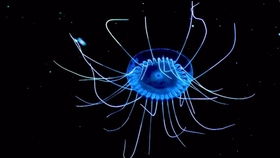Content:
Introduction: Diving into the world of freshwater fishing, one often finds a treasure trove of diverse species, each with its unique characteristics and challenges. Among these, freshwater carnivorous fish stand out for their voracious appetites and striking appearance. Whether you're targeting species like bass, pike, or trout, mastering the art of catching these feisty predators requires a blend of skill, patience, and knowledge. In this article, we will delve into the essential techniques and tips for successfully fishing for freshwater carnivorous fish.
Understanding the Species: Before setting out on your fishing adventure, it's crucial to understand the habits and preferences of the carnivorous fish you're targeting. Research the species' feeding patterns, preferred habitats, and the types of bait they are most attracted to. This knowledge will help you tailor your approach and increase your chances of a successful catch.
Choosing the Right Equipment: The equipment you use can significantly impact your fishing experience. Here are some key considerations:
a. Rod and Reel: Opt for a medium-heavy to heavy-duty rod and reel combination to handle the fight that carnivorous fish are known for. The rod should be strong enough to withstand the pressure and have a fast action to quickly set the hook.
b. Line: Use a monofilament line with a breaking strength that matches the size of the fish you're targeting. For instance, a 10-15-pound test line is suitable for bass and pike, while a lighter line might suffice for smaller species like trout.
c. Lures and Baits: Carnivorous fish are attracted to a variety of lures and baits. Live bait, such as worms, minnows, or leeches, can be highly effective. Artificial lures like spinnerbaits, crankbaits, and jigs are also popular choices.
Selecting the Right Bait: The type of bait you choose can make or break your fishing trip. Here are some tips for selecting the right bait:
a. Live Bait: Live bait is often the preferred choice for carnivorous fish. Ensure the bait is fresh and moving naturally in the water to mimic the prey's movement.
b. Artificial Lures: When using artificial lures, pay attention to their color, size, and action. Match the lure to the type of prey the fish would naturally feed on, and experiment with different presentations to see what works best.
Locating the Fish: Carnivorous fish are often found in areas with abundant prey and cover. Here are some tips for locating them:
a. Study the Habitat: Look for areas with rocks, logs, weeds, or other structures that provide cover for the fish and potential prey.
b. Observe the Water: Pay attention to the water's movement and clarity. Carnivorous fish are often found in areas with strong currents or near the surface where they can spot their prey.
c. Use a Fish Finder: A fish finder can be a valuable tool for locating schools of fish and understanding their depth and distribution.
Casting and Retrieval Techniques: Once you've located the fish, it's time to cast and retrieve your bait or lure effectively:
a. Cast: Cast your line with a smooth, controlled motion. Aim for areas with cover or where you've seen fish activity.
b. Retrieve: The speed and action of your retrieve can make a significant difference. For live bait, let it sink to the desired depth and then twitch it slightly to mimic a struggling prey. For artificial lures, experiment with different retrieves to see what triggers a bite.
Handling and Release: When you've made the catch, handle the fish with care to ensure its survival:
a. Landing Net: Use a landing net to gently scoop the fish out of the water, minimizing stress.

b. Unhooking: Be quick and careful when unhooking the fish. Use a dehooking tool if necessary.
c. Release: If you're not keeping the fish, release it gently back into the water, ensuring it can swim away quickly.
Conclusion: Catching freshwater carnivorous fish can be a thrilling and rewarding experience. By understanding the species, selecting the right equipment and bait, and mastering the art of casting and retrieval, you'll be well on your way to becoming a skilled angler. Remember to always practice ethical fishing and respect the natural habitat of these magnificent creatures. Happy fishing!












